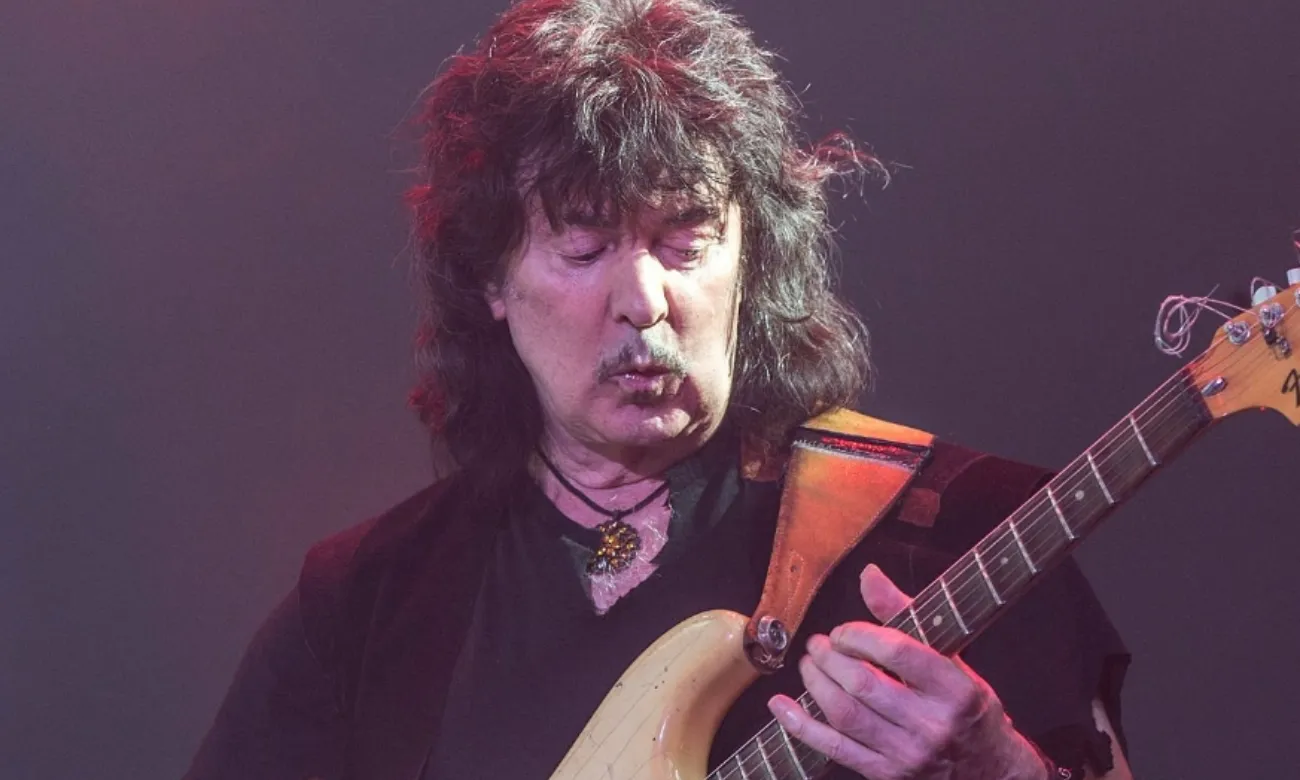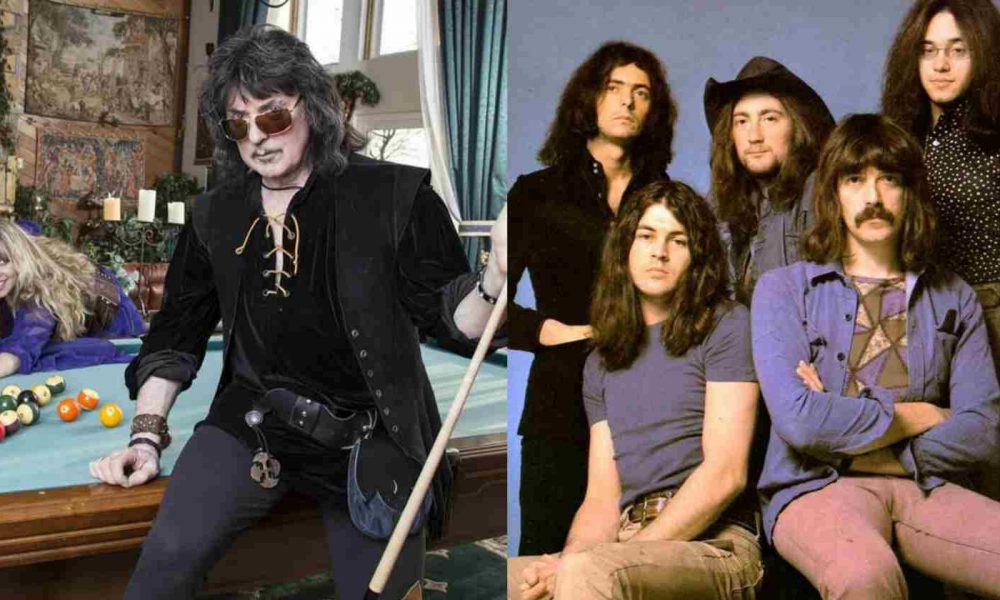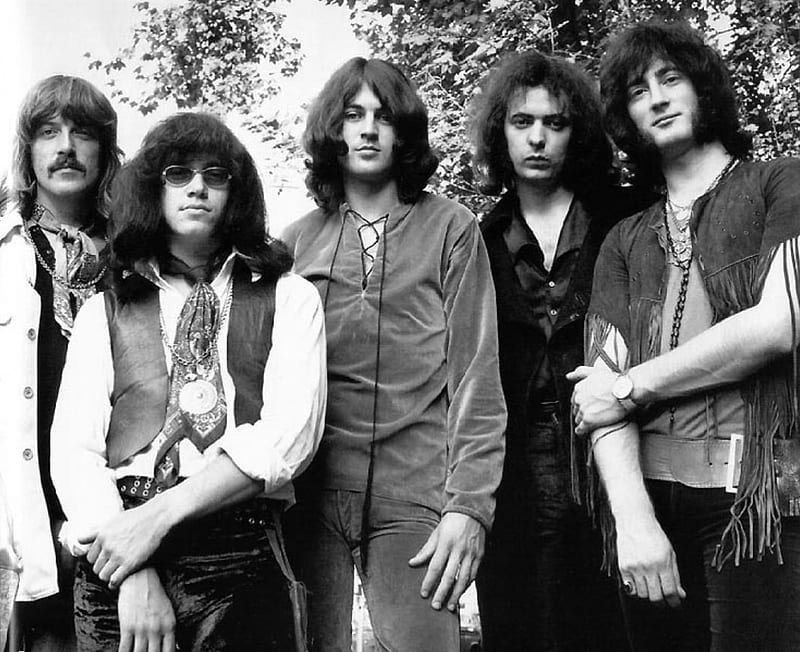
Ritchie Blackmore detailed his decision to step away from Deep Purple in the ‘90s and pursue the more traditional folk-rock project Blackmore’s Night, explaining that he had grown bored with the travails of playing in a world-famous hard rock band.
The guitarist left Deep Purple for good in 1993; he then briefly rebooted Rainbow before starting Blackmore’s Night with singer (and now-wife) Candice Night in 1997. As Blackmore recently explained to New Jersey Stage: “The stress was from the traveling to do with rock ’n’ roll, the continual trying to come up with different augmentations of heavy riffs, which can be boring. I was getting stale playing the same type of music: heavy rock for the sake of playing heavy rock.”

After spending several decades with the group he co-founded and writing some of the most enduring hard rock and metal anthems in history, Blackmore felt compelled to dive headfirst into another passion: traditional medieval music. “I have always been interested in melodic rock — melodies in general,” he said. “Toward the end of Purple, it was just being loud for the sake of being loud, so when I heard renaissance music, there were so many incredible melodies that struck a chord with me. That was such a relief in many ways, so I jumped off the monster train just to play some melodies more organically.”
Blackmore’s Night Offered an Escape From the Music Industry
Night — who contributed to Rainbow’s 1995 album Stranger in Us All prior to the formation of Blackmore’s Night, and who married Blackmore in 2008 — added that Blackmore’s Night provided an escape from the pressures of the music industry for the titular guitarist.

“It really began as a personal journey and escape from what the rock ’n’ roll world had become for Ritchie in the late ‘90s,” she said. “Having had such success in the ‘60s and throughout [the ‘70s and ‘80s], he was used to creative freedom and individuality of bands. But by the late ‘90s, when he reformed Rainbow, the corporations wanted approval over everything. Record companies wanted a say in titles of songs, demos to hear the direction of the album. It wasn’t what he was used to dealing with at all.
“So, while the other band members in Rainbow were doing their tracks, we were sitting fireside in a farmhouse studio in Massachusetts, playing acoustic guitar and writing songs for our own pleasure,” she continued. “When our friends heard them and said they loved them was when we decided to put them out for the rest of the world. But it continues to be a path of stress release from the pressures of society and form of escapism — not only for us when we are creating the music, but for those listening to it as well.”
Deep Purple Lineup Changes: A Complete Guide
Charting more than 50 years of changing faces in Deep Purple.
1968-69: Ritchie Blackmore / Jon Lord / Ian Paice / Rod Evans / Nick Simper
A proposed supergroup from the start, Deep Purple was assembled around the talents of classically trained organ player Jon Lord (late of the Artwoods) and guitarist Ritchie Blackmore, a stage and session ace whose resume already included names like Screaming Lord Sutch, the Outlaws and eccentric producer Joe Meek. After dispensing with original percussionist Chris Curtis and the formative band name of Roundabout, the twosome recruited bassist Nick Simper (of the Flower Pot Men) and singer Rod Evans (of the Maze), who brought with him teenage drummer Ian Paice. Deep Purple Mk. I recorded three albums, experienced an immediate U.S. breakthrough with their cover of Joe South’s “Hush,” but then seemed in danger of becoming a one-hit wonder due to mounting business, personal and creative issues — all of which brought them to a premature career crossroads.
1969-73: Ritchie Blackmore / Jon Lord / Ian Paice / Ian Gillan / Roger Glover
By the summer of 1969, Blackmore, Lord and Paice were in agreement that changes in both sound and personnel were needed for there to be any hope of relaunching Deep Purple’s career. They replaced Evans and Simper with Episode Six singer Ian Gillan and bassist Roger Glover, whom they felt were better equipped to pursue a heavier new direction. Sure enough, following a brief detour into symphonic rock for Lord’s ambitious ‘Concerto for Group and Orchestra,’ the rookie duo proved to be perfect catalysts. ‘In Rock,’ ‘Fireball’ and ‘Machine Head’ are still lauded as cornerstones of hard rock and heavy metal. Still, Deep Purple’s so-called Mk. II lineup would soon buckle under the pressure of creative differences and non-stop work. After cementing their legend with 1972’s ‘Made in Japan,’ and cutting 1973’s clearly less inspired ‘Who Do We Think We Are?,’ Gillan and Glover exited, leaving Blackmore, Lord and Paice to consider their next move.

1973-75: Ritchie Blackmore / Jon Lord / Ian Paice / David Coverdale / Glenn Hughes
1975-76: Jon Lord / Ian Paice / David Coverdale / Glenn Hughes / Tommy Bolin
1989-92: Ritchie Blackmore / Jon Lord / Ian Paice / Roger Glover / Joe Lynn Turner
Maybe fans should have seen it coming. Blackmore’s hand-picked successor for Gillan was one-time Rainbow frontman, Joe Lynn Turner. A fine vocalist and competent songwriter in his own right, Turner nevertheless sparked a firestorm of criticism. Deep Purple’s solid 1990 effort ‘Slaves and Masters’ album was predictably and, somewhat justifiably, dismissed as “Deep Rainbow” — the worst of both worlds. Blackmore and company gamely embarked on a world tour in an effort to make the lineup stick, but record and ticket buyers were simply not having it. By 1992, Blackmore had been forced to re-admit Gillan into the Deep Purple fold, but the damage was done.
1992-93: Ritchie Blackmore / Jon Lord / Ian Paice / Ian Gillan / Roger Glover
Once-vaunted and now-diminished, the Mk. II lineup returned for a third and final go-round. The results on 1993’s appropriately named ‘The Battle Rages On…’ reflected the irreconcilable musical and personal differences compromising all of Deep Purple, but Blackmore and Gillan in particular. An ensuing world tour was meant to mark the band’s 25th anniversary, but there was little to celebrate. Mired in mixed fan response and absolutely horrible band vibes, Blackmore abruptly resigned after a November concert in Helsinki. The remaining four bandmates had to call in a pretty big favor in order to fulfill the remaining touring commitments.
1993-94: Jon Lord / Ian Paice / Ian Gillan / Roger Glover / Joe Satriani
Joe Satriani joined Deep Purple for a short-term residency in time to cover an already-booked Japanese tour in December 1993, then stayed on through the next summer’s tour of Europe. But any chance of Satriani joining permanently was harpooned by his standing commitment to Epic Records, and he would never record as a member of Deep Purple. Still, his short stay gave the band just enough time to ponder their next move and find a long-term solution for their high-profile guitar position.
1994-02: Jon Lord / Ian Paice / Ian Gillan / Roger Glover / Steve Morse
With Satriani’s tour of duty completed, Gillan, Glover, Lord and Paice could finally pause long enough to consider where to take Mk. VII. They found a worthy and reliable replacement in veteran Dixie Dregs and Kansas guitarist Steve Morse. Their first album together, 1996’s ‘Purpendicular,’ hardly sounded like vintage Deep Purple but nonetheless delivered a strong selection of tunes. They followed with 1998’s ‘Abandon,’ and some of the most intensive touring of the band’s long career. That punishing schedule, however, prompted Lord’s retirement at age 61. Ian Paice remained as Deep Purple’s only ever-present participant.

2002-22: Ian Paice / Ian Gillan / Roger Glover / Steve Morse / Don Airey
Mk. VIII would become the longest-running Deep Purple lineup ever, spanning two decades. Lord (who passed away in 2012 from pancreatic cancer) was replaced by Don Airey, a keyboardist with a long resume including stints with Ozzy Osbourne, Rainbow, Black Sabbath and Whitesnake, among others. The band remained a steady touring act during this era, while also delivering six studio albums: ‘Bananas’ (2003), ‘Rapture of the Deep’ (2005), ‘Now What?!’ (2013), ‘Infinite’ (2017), ‘Whoosh!’ (2020) and the covers album ‘Turning Into Crime’ (2021).
2022-Present: Ian Paice / Ian Gillan / Roger Glover / Simon McBride / Don Airey
Morse announced a “temporary hiatus” from Deep Purple in March 2022 to be with his wife Janine as she battled cancer. Simon McBride, who previously worked alongside frontman Ian Gillan, took the guitarist’s place. Morse made his departure permanent a couple of months later, officially bringing his 28-year tenure to a close. “I simply couldn’t commit to long or far-away tours, since things can change quickly at home,” he explained. “I’ve already played my last show with Purple.”
Leave a Reply